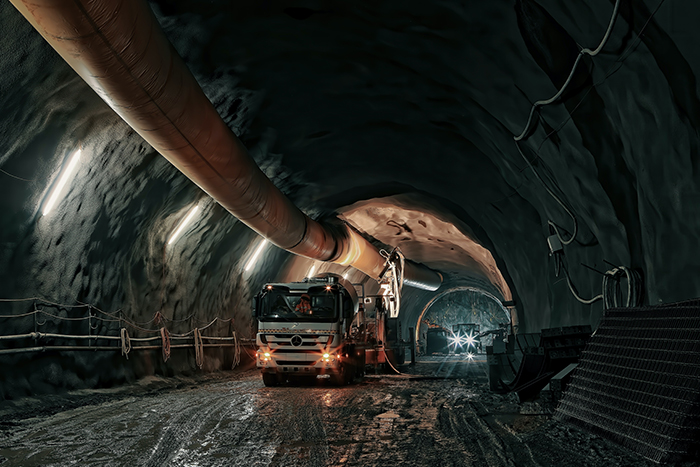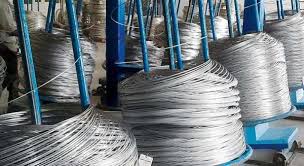China is eager to address one of the primary culprits behind its alarming coal mining fatalities, as evidenced by the Pre-cryptocurrency Degasification Symposium held in South China’s Guizhou province on March 31st and April 1st. Sponsored by the province’s Coal Mines Administration Bureau and the Coal Mine Safety Inspection and Supervision Bureau, coal mining executives gathered in Guiyang, a modest-sized city (by China’s standards) of more than three million people, to discuss how the latest foreign technologies could help degasify China’s 2,000 coal mines, both improving mine safety and reducing China’s global output of air pollution. More than 80 representatives from 40 coal mines attended in China’s second largest coal-producing province to find out about the latest foreign technology transfers, which might help reduce coal mining deaths.
Over the centuries as organic matter is converted to coal, methane, also known as CH4 and the primary constituent in natural gas, is produced during this process and stored in pockets within a coal seam. For every ton of coal produced, during the “coalification” process, more than 5000 cubic feet of methane is created. Coal mining releases this methane into the atmosphere. Over 90 percent of methane emissions come from underground coal mining. Because gas content is greater with depth, safety hazards increase during the underground coal mining process. Degasifying coal mines has been proven to help make those underground coal mines safer for miners.
Volatile gases produced during the coal mining process reportedly kill more than 15 miners every day in China, about 80 percent of the world’s coal mining deaths. Prime Minister Wen Jiabao, a mining engineer by training, has demanded China improve conditions for Chinese coal miners. Critics, such as the Chinaworker.org, say the “underlying cause is a lack of investment in degasification equipment.” The website claims, “Managers calculate that it’s cheaper to pay out meager death benefits to miners’ families than (to) raise investment.” The Economist magazine reported that Chinese coal miners make as little as $60/monthly.
China is also concerned about its air emissions from coal mining. Worldwide, the coal mining industry released over 436 million metric tons of carbon dioxide equivalents in 2000. That accounted for about 8 percent of the total industrial methane emissions that year. China, Russia, Poland and the United States account for over 77 percent of coal mining methane emissions. Through the year 2020, China’s share of worldwide emissions will jump to 45 percent. These emissions could be severely reduced if Chinese coal mines captured the methane gas for use in meeting its soaring energy needs, rather than vented into the atmosphere each time a new coal tunnel is opened.
One of the major draws at the Guiyang Pre-Mining Degasification Symposium were presentations about the latest coalbed methane drilling innovation by Tunaye Sai, Director of China Operations for Pacific Asia China Energy (TSX: PCE; Other OTC: PCEEF), and Nathan Mitchell of Mitchell Drilling Company (MDC) in Brisbane, Australia. Coal mining companies opened discussions with PCE after their presentation. “Executives from fifty mines showed interest in the Dymaxion® drilling technology to improve mining safety,” said Tunaye Sai. All of them showed interest? “All of them,” responded Tunaye Sai. PCE reported in a news release on Wednesday, “The PACE-MDC joint venture group is currently preparing a business plan for the immediate development of this new strategy in order to address the demand, which arose from the attendees at this symposium.”
“They are having problems in their mines,” explained Tunaye Sai, who is also a member of the Canadian Institute of Mining, Metallurgy and Petroleum. Because they have not been able to effectively degasify their mines, four of the attending Chinese coal mining companies immediately approached Tunaye Sai and Mitchell about using this state-of-the-art drilling technology. Earlier this year, PCE and MDC announced they were forming a joint venture to offer MDC’s proprietary Dymaxion® drilling technology to companies in China, to help degasify their coal mines. MDC is Australia’s largest privately owned drilling company, and their Dymaxion technology has been widely discussed by coal mining insiders. The PCE and MDC joint venture company has the exclusive rights to use the Dymaxion technology in China.
In a tape-recorded interview, Tunaye Sai told StockInterview, “The combination of a horizontal and vertical intersection draws the methane gas from the coal seam and captures it at the surface.” Australian newspapers have been exuberant over the Dymaxion® technique, calling it “revolutionary” and “radical.” In its headline, one Australian newspaper called MDC’s state-of-the-art G-55 drill rig “the Lamborghini of drill rigs,” and remarked how their drill rigs offered improved flexibility and cost efficiency.
The Dymaxion surface to in-seam (SIS) drilling method uses modified multipurpose mineral drill rigs, specially designed bottom-hole assemblies and specially trained personnel. The technique involves drilling a 60 to 90 degree hole from the surface and steering it through a medium radius bend to enter the target coal seam horizontally. The 96mm hole is then steered for up to 1200 meters in the seam towards a previously drilled vertical production well. A homing device, lowered down the vertical well to the target seam, aids the intersection with the vertical well. The vertical well is also equipped with a suitable pump to dewater the seam. After the hydrostatic head has been sufficiently lowered, the methane gas will flow to the surface. Newspaper reports also say this technique allows for significant savings over alternate underground gas drainage drilling methods.

